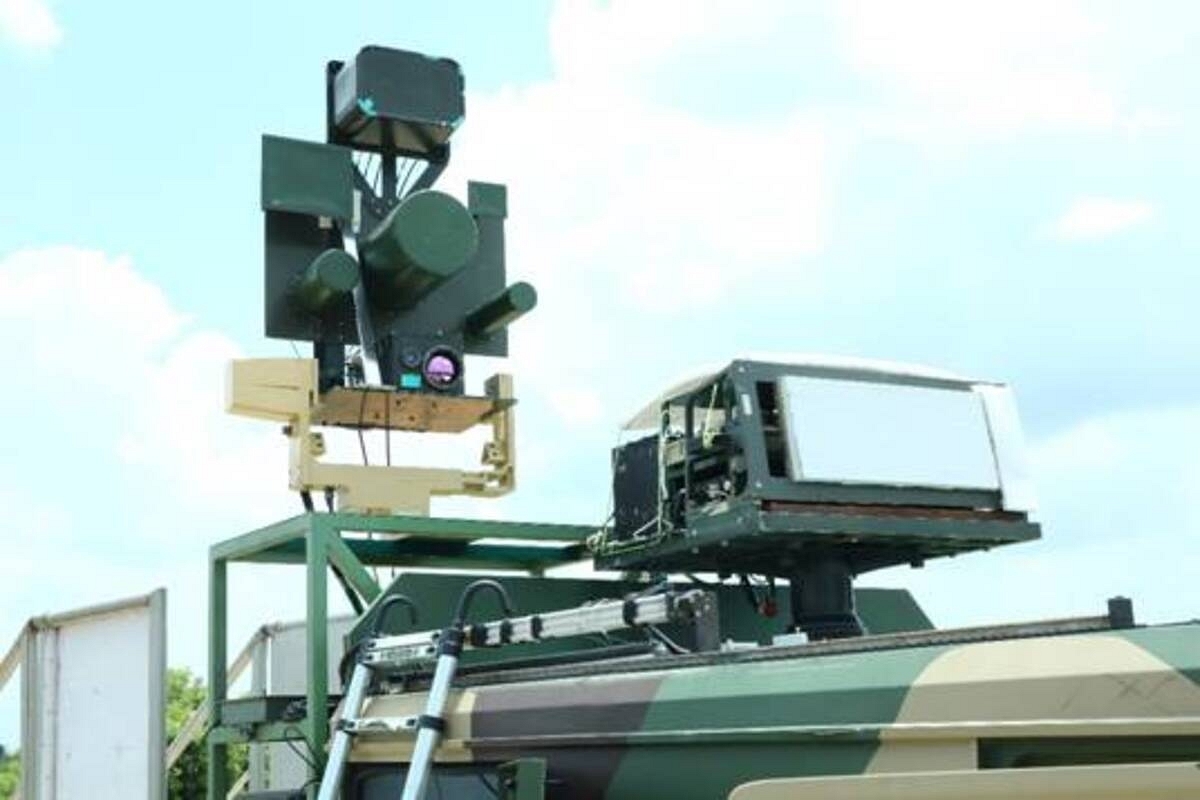News Brief
Indian Army Deploys Indigenous Anti-Drone System Along China Border To Counter Unmanned Aerial Threats

The DRDO anti-drone system. (Representative Image)
The Indian Army has inducted the initial batch of seven new indigenous Integrated Drone Detection and Interdiction Systems (IDD&IS) for use along the northern borders with China.
These systems are designed to counteract unmanned aerial vehicles (UAVs) through both jamming (soft kills) and lasers (hard kills).
With a detection range of 5 to 8 kilometers, the IDD&IS can jam drones within 2 to 5 kilometers and effectively destroy them at over 800 meters.
Developed by the Defence Research and Development Organisation (DRDO) and Bharat Electronics, these systems are the first batch of Mark-1 variants inducted by the Army Air Defence, Times of India reported.
The future versions of the IDD&IS will feature enhanced interception ranges.
The current systems are adept at detecting drones with low radar cross-sections and neutralising them through integrated soft and hard kill capabilities.
The recent conflicts in Armenia-Azerbaijan and Russia-Ukraine have highlighted the strategic importance of drones, prompting the Indian armed forces to acquire a broad spectrum of UAVs from both domestic and international sources.
There is an equal emphasis on inducting different kinds of effective counter-drone systems, ranging from jamming, spoofing and blinding systems to disrupt the satellite or video command-and-control links of drones to laser-based DEWs.
The armed forces have already inked several contracts for them, and more are in the pipeline.
The IAF had recently floated initial tenders for 10 kamikaze drones-based anti-swarm drone systems, 10 mobile micro munitions-basedd anti-swarm drone systems and 100-200 vehicle-mounted C-UAS (counter unmanned aircraft systems).
Despite previous delays in drone and counter-drone development, India is progressing with the procurement of anti-drone systems equipped with lasers ranging from 2-kilowatt to 10-kilowatt power levels.
Furthermore, DRDO is advancing in the development of DEWs, aiming to achieve power levels of 30-50 kilowatts as part of a strategic roadmap targeting enhancements in range, precision, and operational efficiency of these weapons.
Support Swarajya's 50 Ground Reports Project & Sponsor A Story
Every general election Swarajya does a 50 ground reports project.
Aimed only at serious readers and those who appreciate the nuances of political undercurrents, the project provides a sense of India's electoral landscape. As you know, these reports are produced after considerable investment of travel, time and effort on the ground.
This time too we've kicked off the project in style and have covered over 30 constituencies already. If you're someone who appreciates such work and have enjoyed our coverage please consider sponsoring a ground report for just Rs 2999 to Rs 19,999 - it goes a long way in helping us produce more quality reportage.
You can also back this project by becoming a subscriber for as little as Rs 999 - so do click on this links and choose a plan that suits you and back us.
Click below to contribute.
Latest